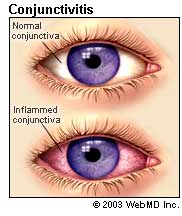Section 1. Avian Influenza Facts
- Source and Transmission
- Agent Characteristics
- Virus Survival
- Clinical Signs in Birds
- HPAI H5N1
- Human Concerns
Avian Influenza Biosecurity for Backyard Flock Owners
Signs and Symptoms of AI in People
Due to the infrequent cases of avian influenza, definitive symptoms are difficult to determine. However, avian flu will probably begin like seasonal flu, with the severity of symptoms drastically increasing over the first 12-24 hours.6
Notice that some of these signs and symptoms are very similar to those of seasonal cold and flu; however, if you develop a high fever or have difficulty breathing, seek medical attention immediately.
Laboratory tests are used to diagnose avian influenza infection in humans by swabbing the patient's nose or throat. Samples are then sent for diagnostic testing to verify the presence or absence of virus.7
If found to have avian influenza, you will be treated with antiviral medications such as oseltamivir (Tamiflu®) or zanamivir (Relenza®). Treatment strategy and drug effectiveness continue to be evaluated.

Wikipedia: Moriori
Signs and Symptoms:2
|
 |
Laboratory tests are used to diagnose avian influenza infection in humans by swabbing the patient's nose or throat. Samples are then sent for diagnostic testing to verify the presence or absence of virus.7
If found to have avian influenza, you will be treated with antiviral medications such as oseltamivir (Tamiflu®) or zanamivir (Relenza®). Treatment strategy and drug effectiveness continue to be evaluated.

Wikipedia: Moriori
